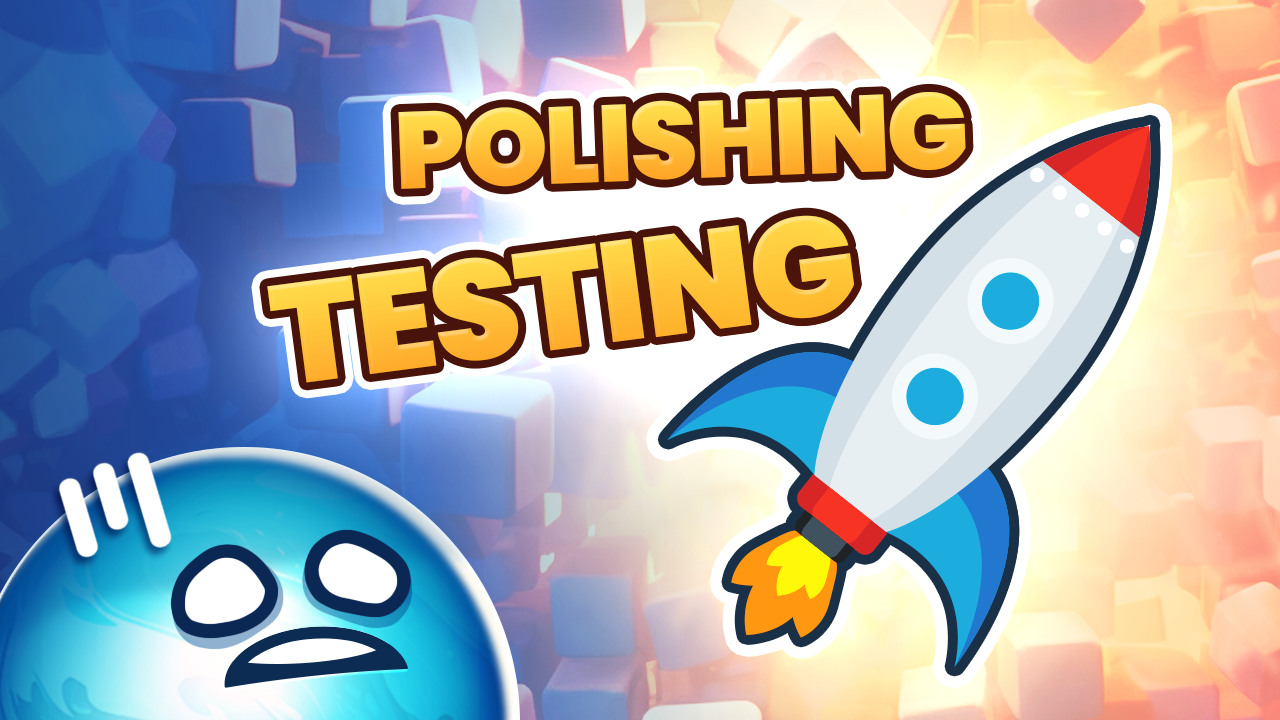
Lessons Learned from Preparing My Game for Release!
Ever wondered what goes into launching a game? Come behind the scenes with me as I share 5 lessons I learned from the experience.
At the end of the year 2023 I proudly told Steam that Enigmarble would be released some time during February 2024. I decided that I would dedicate all free time I had over the next few months, to fully complete and polish the game the best as I could. So I kicked off January 2024 with a bang, as most people do with a fresh new year and a metaphorical clean slate.
Playtesting!
I started properly playtesting the game. I created a build of the game, reset all save progress, and played through the game from the start as a new player would, without cheats.
For efficiency’s sake I would jot down any bugs I encountered on Post Its, instead of doing the whole window alt-tabbing thing to a notes program. Being a conscientious developer I figured it couldn’t be too many bugs, right? Right?
After spending a full weekend, and I mean a full weekend of two whole days, testing my game, my jumbo Post it block had lost half its weight, and I was not even halfway through my game yet.
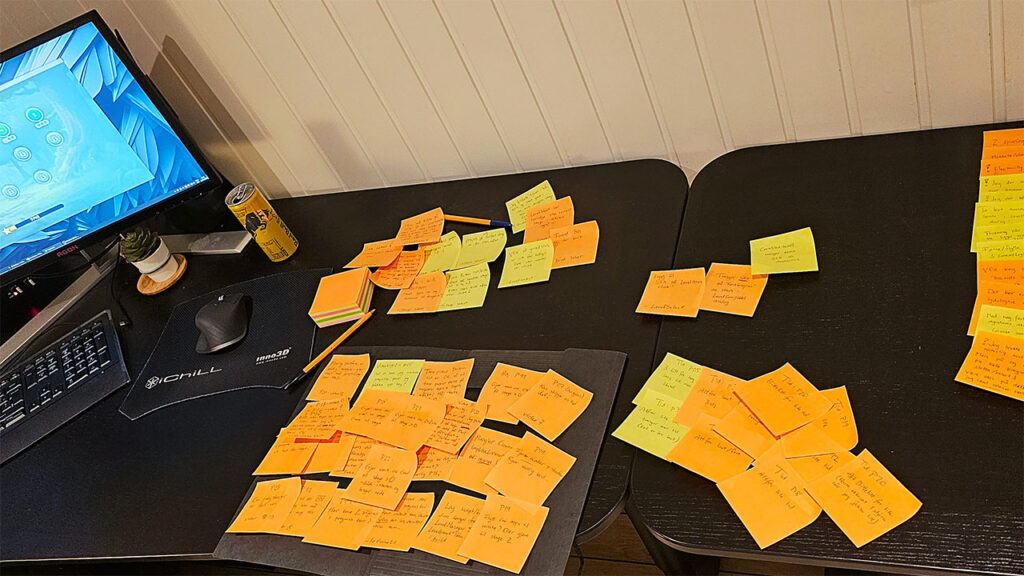
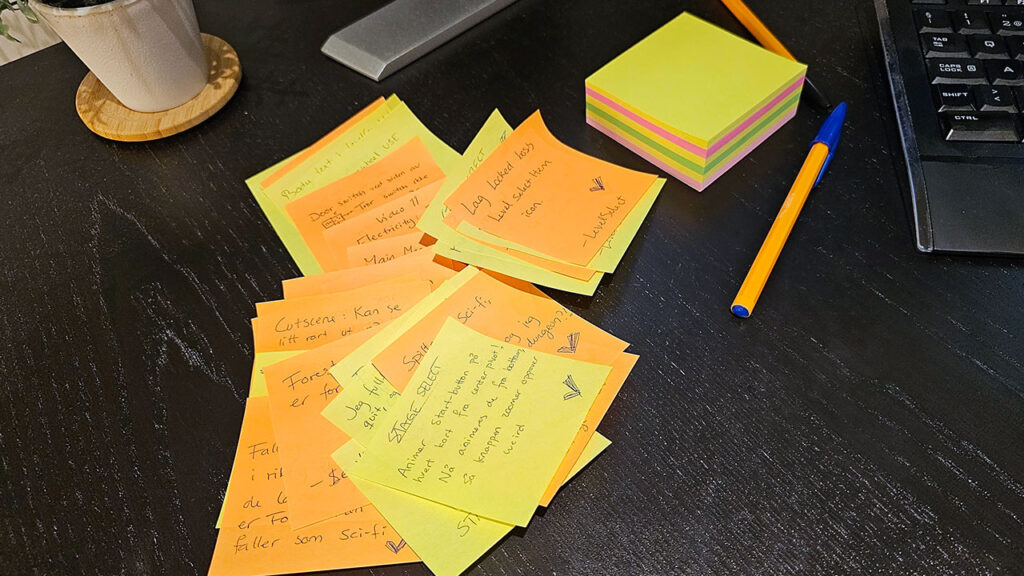
Pushing the release date
Right after this weekend, by some crazy coincidence, I received an email from Steam reminding me that the release date was coming soon, and if I wasn’t ready yet, I had to change it. Because when you get too close to the release date you’ve set in Steam, you can’t change it.
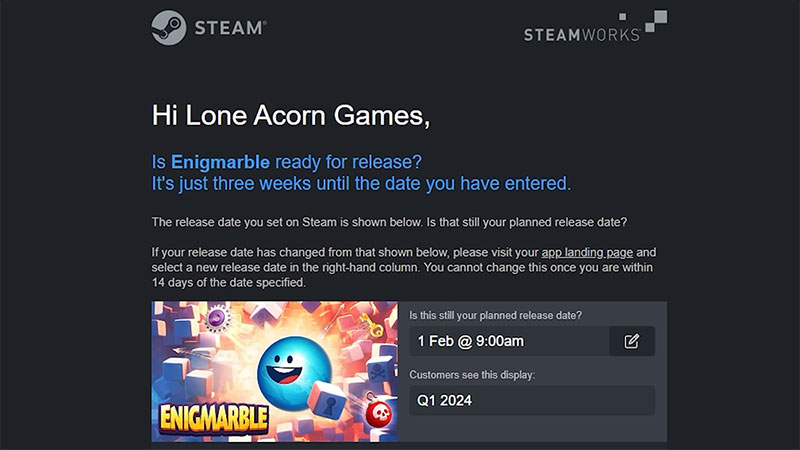
So I had to swallow my pride and push the release date a bit further in time.
This did lit some fire under me, and I started some serious crunch time. I work full-time, but would spend the evenings after work, and pretty much every weekend, on polishing and testing the game.
Final items to finish
Music and SFX 🎵 🔊
I finally found, purchased, and added music to the game, and the last share of sound effects. This was something I’ve procrastinated for ages, because I knew it would be difficult. I was born deaf, and even though I can hear some with the help of fancy hearing devices, sound and especially music are just not that big of a part of my everyday life. I have had the mute button in Unity toggled on during all of the game’s development, and never really thought twice about it.
Maybe this will trigger some game developers or gamers who firmly believe sound and music are important parts of a game. And you know what? I’ve come to realize the significance of sound and music in a game as well! Once I added in audio and turned this on while playing, the game became so much more engaging to play!
Redesigning boss levels ☠
In Enigmarble you play levels divided into six worlds, and each world ends with a boss level. I had fully designed and built these boss levels, however I’ve been dissatisfied with them for a long time. When I finally really started playtesting my game, I came to the realization that the boss levels were frustrating and simply not fun. I also attempted to test the game from the perspective of a novice player, and discovered that some of the boss levels were difficult to understand, in terms of finding the solution or the next step.
So I figured I would spend a day fixing the boss levels, as it was only 6 of them, after all. In reality, I spent at least a week. At least now the boss levels are at a point where they are challenging and fun, and much less frustrating.
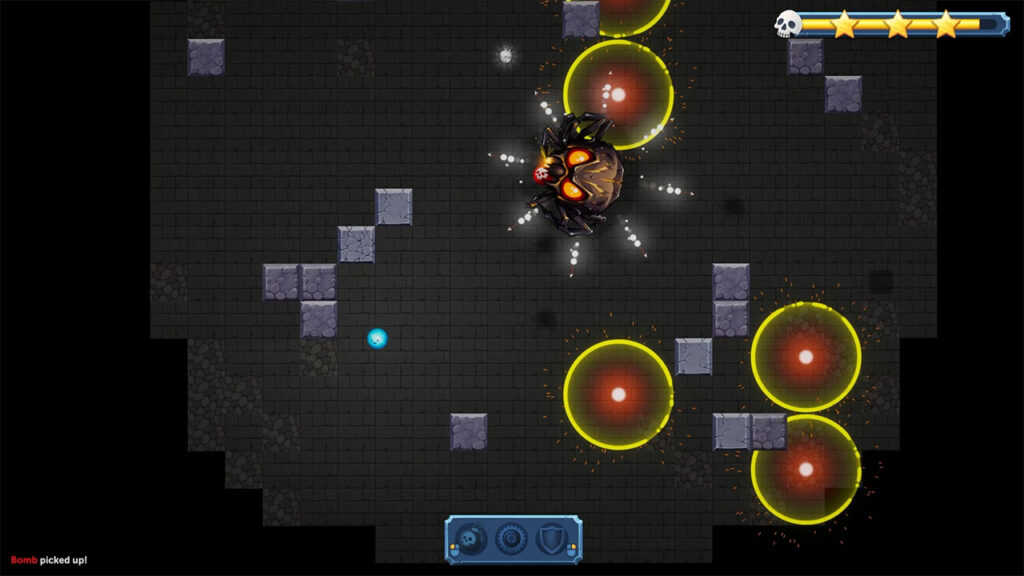
Define time-based star ratings for all 90 levels 🌟
Finally I really only had one big task left: define the time-based star ratings for all levels in the game. When you play a level in Enigmarble, the time ticks down, and you are rewarded with a score of 0 to 3 stars how long you spent. You’ll need at least one star to unlock the next level, and enough stars in one world to unlock the next world. So getting the scores right is important.

So there I was. I had to figure out how long it takes to play each of the 90 levels in the game, and decide what time I should place the scores of 3, 2, and 1 star. All the levels are unique and different. Some can be played through quite quickly, especially in the early worlds, while others require quite some time, even if you know the solution. And on top of that, most levels have time reducer pickups that had to be accounted for in the final star ratings.
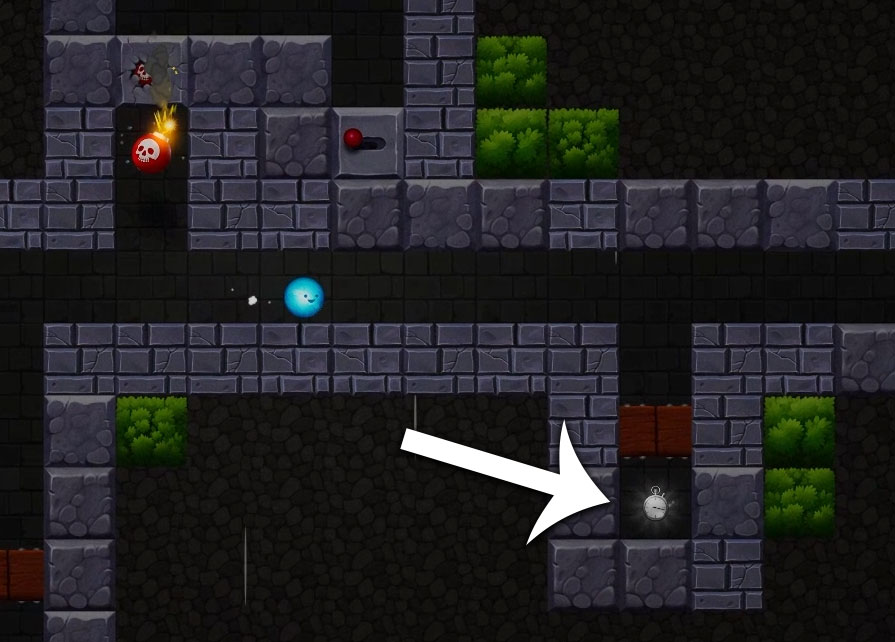
I estimated this would take me a week or so – by working evenings and a weekend. I was completely off in my estimate.
I was continously surprised how long it took to simply play through all the levels in my game. I guess it’s a positive thing, actually. But planning-wise, not so much. Even though I personally designed each of the 90 levels, I don’t remember the solution for every single one. I had to play through every level multiple times to check if I got the time-based ratings right, all while also trying to play in the perspective of a first-time player. It’s a challenge to determine the ideal time for a flawless run, define the benchmark for a 2 star performance, and the absolute minimum time required for completing a level. And I want to get this right, so players don’t get stuck on a level and can’t get further.
Lessons learned
Long story short, QA and polishing my game kicked my butt. Especially planning-wise. But hey, I’m still standing, and Enigmarble is one step closer to release!
Lesson 1: Start playtesting your game as early as possible
I definitely think there’s a balance of testing too early on something you are likely to change later in the development. But once some parts of your game starts being set in stone or finalized, this is the time you should start testing. Don’t do like I did, wait with testing until the very end.
I should also add that it would be invaluable to have other people playtesting your game and giving you feedback. Other players would play your game differently than you, and might uncover crucial issues. However, Enigmarble is my first game and almost nobody knows about it. I wouldn’t be able to find enough people interested in playtesting it. But I hope to get this experience for my next game!
Lesson 2: Don’t underestimate the time required for QA testing and polishing
This was a big lesson for me. I seriously underestimated the time testing and polishing takes, several times during the last few months. Even if you are smart enough to start testing early, anticipate that testing and polishing will likely require twice the time you initially estimate.
Lesson 3: Assume there will be bugs, and plenty of it 🐞
This was another hit in my ego as a software developer. I thought my years of experience, and my personality of being conscientious and meticulous, would result in far less bugs at the end. Be prepared to handle and plan for fixing bugs for quite some time.
Lesson 4: Don’t wait until the last moment to add audio
This is more of a personal lesson. Juice in a game is absolutely necessary, and sound is actually a big part of this. Don’t underestimate the effect good sound and music have on the final feeling of playing the game.
Lesson 5: Testing and polishing takes time. Seriously
I really need to emphasize this point. This is my first time releasing a game, but I’ve been a software developer for almost 20 years. And never have I been more mistaken in my estimates.
Watch the devlog!

Conclusion
To conclude, I have had my butt handed to me the last few months. And I’m still not done. I have learned a lot, and it’s all part of the game development experience. And I believe it’s worth it, because I want the players to have the best experience possible.
An announcement for release date is coming really soon! Stay tuned, and if this game looks interesting to you, you can wishlist Enigmarble on Steam right now!